Digital Black: [Cultivation, Irrigation, Care, Pests and Diseases]

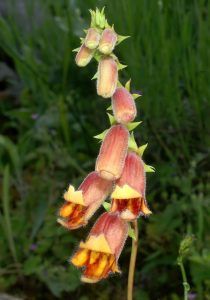 Digitalis obscura is one of 25 species in the genus Digitalis. This plant is characterized by the shape of its flowers and the reddish and dark color of these, which resemble the tones of the sky during a sunset.
Digitalis obscura is one of 25 species in the genus Digitalis. This plant is characterized by the shape of its flowers and the reddish and dark color of these, which resemble the tones of the sky during a sunset.
The species, as such, is native to Europe, from scrub areas and limestone soils distributed in the western Mediterranean area, south of the Iberian Peninsula and North Africa.
Black foxglove is a plant valued for its ornamental and decorative value, as well as for its powerful medicinal properties. However, its sale to the public has been prohibited due to its toxicity.
Digitalis obscura was so named because its flowers mimicked the shape of a thimble. Similarly, the epithet «obscura» was given to it because of the brown and reddish color of its corolla.
Important points when planting a black foxglove:
- Scientific name: Digitalis obscura.
- Common name: Black foxglove, corregia, crujía, corretja, witch, black foxglove, mount carnation.
- Height: 80 centimeters.
- Light Need: Full sun.
- Temperature: Temperate and semi-arid climates (20ºC).
- Irrigation: Moderate and low.
- Fertilizer: Organic fertilizer.
What characteristics does the black digital have?
Also known as cradle, the black foxglove is a herbaceous plant that usually measures between 60 and 60 centimeters wide and 30 to 80 centimeters high, even reaching a maximum of 1.20 meters.
This plant consists of woody roots from which little branched stems of reddish tones sprout. Its leaves, at the same time, are toothed and lance-shaped; They are dark green at first, but turn reddish-brown in fall and winter.

Its flowers have a dark orange or reddish bell-shaped shape, which measure between 2 and 3 centimeters in length. They are grouped in a long and showy inflorescence at the end of the stem that consists of between 7 to 40 flowers. It blooms between May and July.
When to sow black foxglove?
It is recommended to sow black digitalis indoors , or in a greenhouse, during the months of March to May. In case of sowing it outside, it is preferable to do it during the months of May to June, or from September to October.
Where to plant black foxglove?
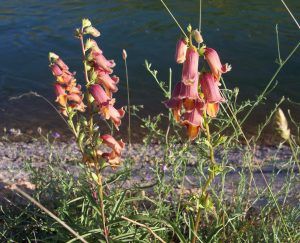 Black foxglove grows naturally in dry thickets, rocky outcrops, between crevices and sandy boulders.
Black foxglove grows naturally in dry thickets, rocky outcrops, between crevices and sandy boulders.
It is a specimen that needs to be planted in full sun and in places with low humidity, although it also flourishes in semi-shade and in more humid places.
With regard to climate, this plant is typical of temperate and semi-arid regions. Its ideal temperature is 20ºC, but it is resistant to temperatures below 10ºC. In fact, the leaves are green at ideal temperatures and turn brown in cooler climates.
Because it is a hardy species, it can be planted in rockeries, in single or multi-species formal garden beds. It is recommended to grow 2 to 3 black foxglove plants per square meter.
How to prepare the land?
To grow the black foxglove, light and sandy soils are needed, well drained, with an alkaline tendency and without too much fertilizer. In hot places, it needs a fairly porous soil that can be protected from winter humidity.
To prepare the soil, select a sunny spot in the garden, remove weeds and remove the soil to promote porosity.

In clay soils, it will be advisable to add sand and organic matter to increase its permeability.
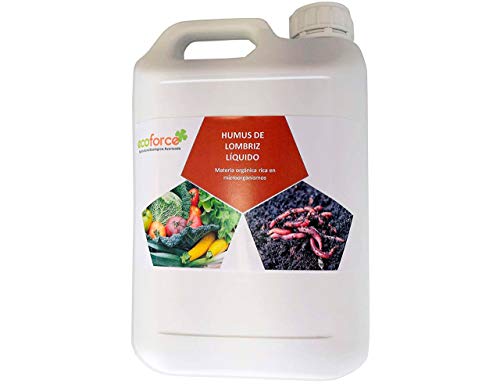
How do we water black foxglove?
This plant has a low water requirement as it is one of the species most resistant to rain within its genus. In fact, it can survive with only a few waterings during the summer. However, in warmer areas, it should be watered deeply.
How often do we water the black foxglove?
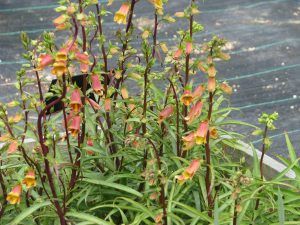 The frequency of irrigation will depend on the climate of the region, as well as the type of soil and weather conditions.
The frequency of irrigation will depend on the climate of the region, as well as the type of soil and weather conditions.
It is recommended to apply about 1 inch of water, or less, once a week, until the soil is moderately moist.
In climates with wet winters, watering should be reduced and shelter from rain to prevent root rot.
How to plant a black foxglove step by step?
The cultivation of the black digitalis is done mainly by seeds, although it can also reproduce by division. The steps to sow this plant through seeds are shared below.
- Place the seeds of the black digitalis in a container or seedbed, on a moist peat substrate and press lightly.
- Place the container in a lighted place, for at least 12 hours, at temperatures around 20ºC and keep the humidity of the substrate constant.
- Wait 2-4 weeks for the seeds to germinate and move to a pot more suitable for their size when a couple of true leaves have sprouted.
- Acclimatize the seedling to the outside climate, progressively, to favor its adaptation.
- Transplant to the definitive place, previously prepared, as soon as the risk of frost has passed, or when the leaves of the plants are approximately 10 centimeters long.
What care does the black digitalis need?
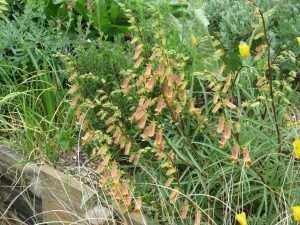 The black foxglove is a plant with powerful properties that make it a threat.
The black foxglove is a plant with powerful properties that make it a threat.
Especially when children or small animals are present, as it could cause death if ingested. Therefore, it is important to evaluate its cultivation in the garden.
If you have decided to grow it, it is important to wear gloves to protect your hands from direct contact during handling, as the sap can also cause skin injuries.
What pests and diseases affect black foxglove?
Problems with black foxglove cultivation include aphids, mealybugs, slugs, and Japanese beetles. To stop these pests, potash soap can be applied, or a broad-spectrum insecticide can be applied.

With regard to diseases, the appearance of powdery mildew has been reported. In these cases, it is recommended to clean the leaves with a cloth moistened with pH 8.0 water, remove the affected leaves, or apply an antifungal or fungicidal agent.
References
- http://www.dipalme.org/Servicios/Anexos/anexosiea.nsf/VAnexos/IEA-NUPS-nups/$File/NUPS-nups.pdf
- https://wastemagazine.es/digitalnegra.htm
- https://sites.google.com/site/arbabajojarama/herbarium/families/genera/Especies/digitalis-obscura
- https://dialnet.unirioja.es/servlet/tesis?codigo=73519
- http://www.carex.cat/es/vivers-carex/catalogo/digitalis-obscura-obscura.aspx
- https://www.asturnatura.com/especie/digitalis-obscura-subsp-obscura.html
- https://www.miteco.gob.es/es/biodiversidad/temas/inventarios-nacionales/iect_digitalis_obscura_tcm30-164124.pdf
- https://www.seedaholic.com/digitalis-obscura.html
- https://murcianatural.carm.es/c/document_library/get_file?uuid=3fdd1769-2ee6-4559-8bb5-56c993d27e05&groupId=14

![Photo of Daisy Pruning: [Importance, Time, Considerations and Steps]](https://www.complete-gardening.com/wp-content/uploads/2022/08/daisy-pruning-importance-time-considerations-and-steps-390x220.jpg)
![Photo of Grow Tradescantia (Brazilian Trunk) in your Garden: [Irrigation, Care, Pruning and Substrate]](https://www.complete-gardening.com/wp-content/uploads/2022/08/grow-tradescantia-brazilian-trunk-in-your-garden-irrigation-care-pruning-and-substrate-390x220.jpg)
![Photo of Plant Leeks: When, How, Where and much more [12 Steps]](https://www.complete-gardening.com/wp-content/uploads/2022/08/plant-leeks-when-how-where-and-much-more-12-steps-390x220.jpg)
![Photo of The Zamioculcas: [Care, Planting, Irrigation, Substrate]](https://www.complete-gardening.com/wp-content/uploads/2022/08/the-zamioculcas-care-planting-irrigation-substrate-390x220.jpg)